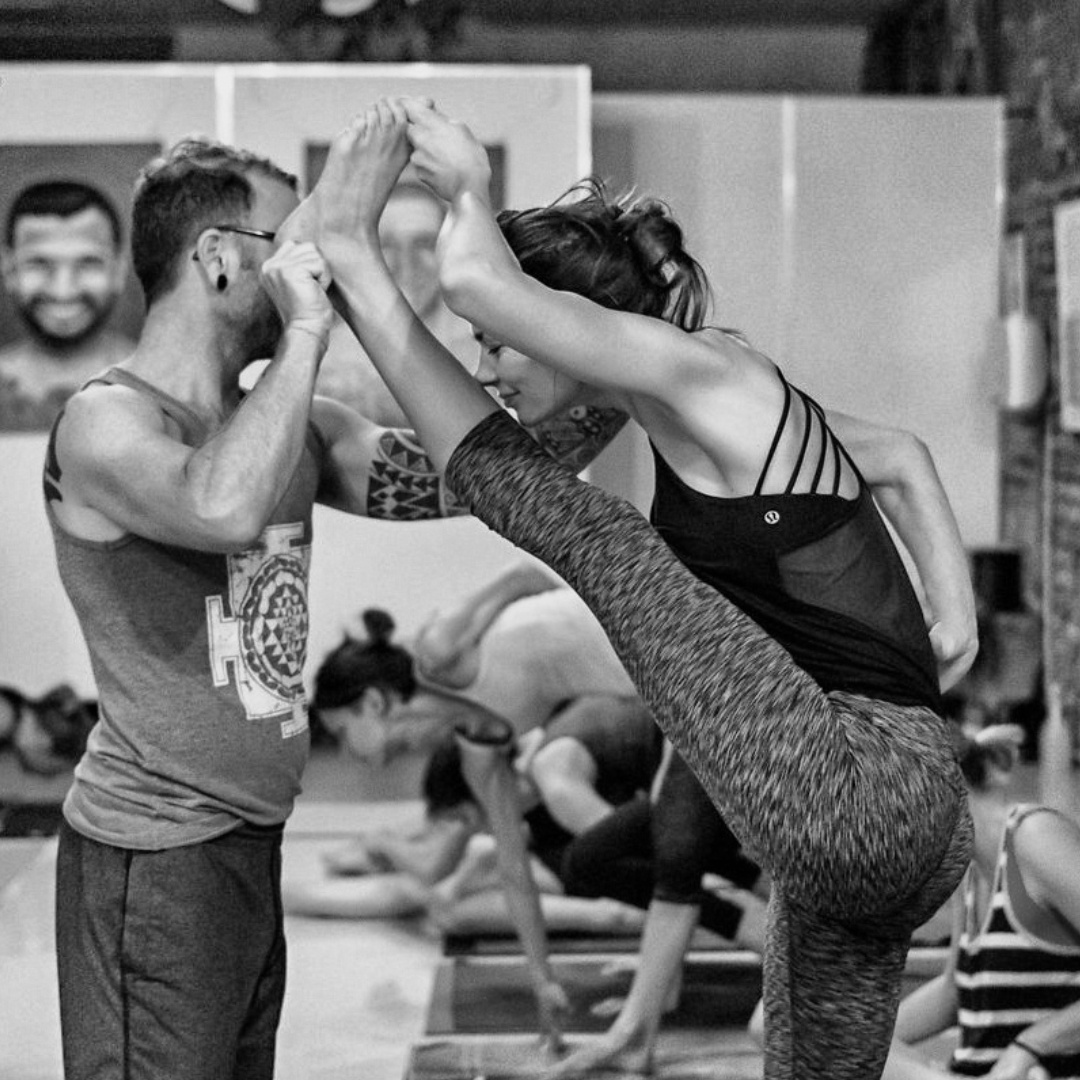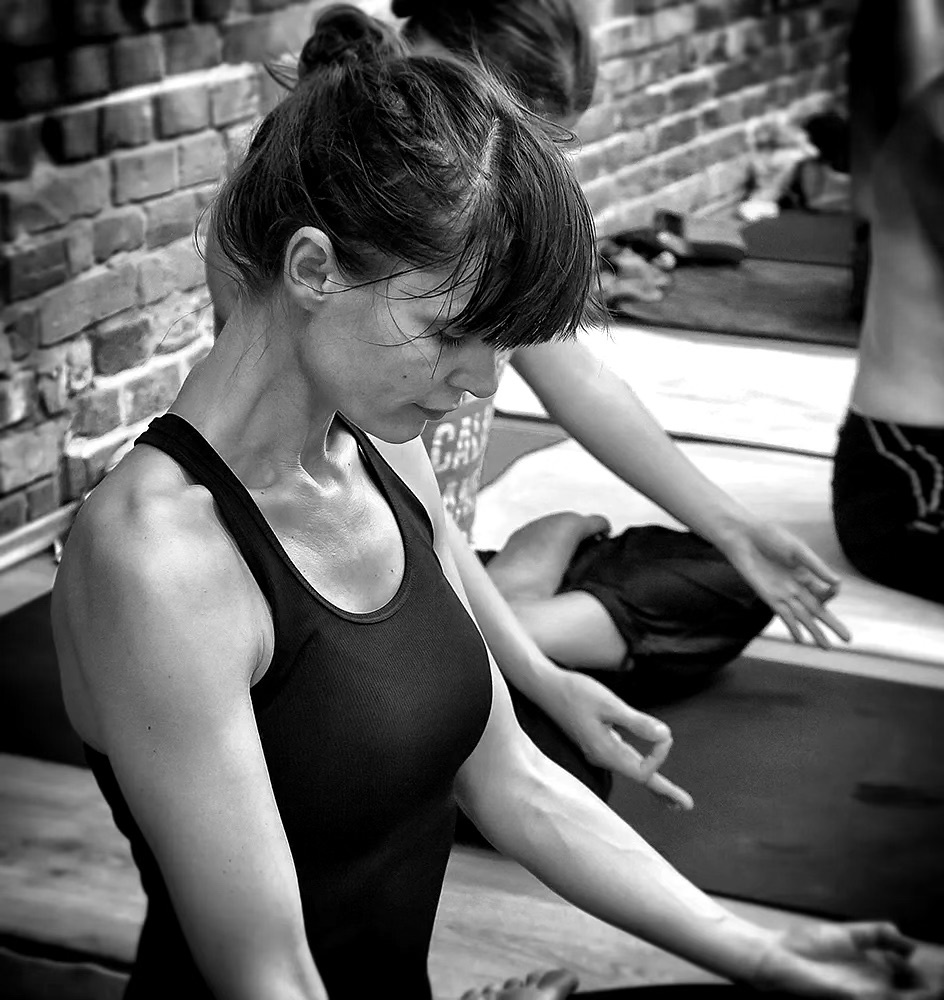ASHTANGA MYSORE-PROGRAM


The Mysore style of ashtanga yoga practice is an effective and personalized method that brings physical strength, flexibility, and inner calm. The continuous progress it offers, along with the teacher-student relationship, provides an opportunity for deeper understanding and personal development.
The ashtanga yoga is an eight-limbed yoga system aimed at achieving the unity of body, mind, and spirit. The journey can be long and arduous, and it should begin with the practice of asanas. By practicing these specific bodily postures, we can achieve a strong and flexible body, which will serve as the foundation for progressing in the ashtanga yoga system. The asana practice itself is a very small part of the entire system, but it is very important and indispensable for the "modern" Western person, who tends to neglect their physical body due to their lifestyle.
A distinctive feature of ashtanga vinyasa yoga is that through the practice of asanas, we not only work on healing the physical body, but also prepare numerous higher-level branches, such as pranayama, concentration, or the meditative state of consciousness.



In ashtanga vinyasa yoga, asanas are traditionally taught in the Mysore style (pronounced 'my-sore'). This method combines the advantages of group-led classes and individual practice. The essence of it is that all practitioners in the room perform the sequence independently, according to the rhythm of their own breath, allowing the instructor to give personalized adjustments and instructions to each individual without disrupting the dynamics of the class. This means it is not a problem if someone practices for a shorter time (e.g., beginners) or spends a longer time in the room (e.g., advanced practitioners) during the same class.
Did you know?
The Mysore style of ashtanga practice is named after the city of Mysore in South India. Pattabhi Jois developed the modern system of ashtanga yoga here at the Ashtanga Yoga Research Institute, founded in 1948.
The timing of the practice is also specific; Mysore classes are traditionally held in the morning. This is because the time of day known as Brahma muhurta, which is the one and a half hours before sunrise, or as close to it as possible, is considered most suitable for yoga practice. At this time, the air is fresh, the environment is quiet, and after waking up refreshed, we are not yet burdened by the impressions of a hard day’s work. The mind is more easily able to focus and is less prone to wander. The body is clean, and the stomach is empty, creating ideal conditions for practice. Initially, the body may seem less flexible in the early hours, but it quickly adapts to the new routine.
This traditional Mysore teaching method also entails that everyone practices regularly, aiming for six sessions per week; however, most practitioners only gradually achieve this, or may practice less frequently. Saturdays, as well as the full and new moon days, referred to as moon days are rest days, as are the first three to five days of menstruation for women. This might seem like a significant challenge at first, but of course, gradual progression is a crucial component of uninterrupted development in yoga. The teacher monitors the students' progress, and when a student is ready, they are given new asanas to add to their sequence.
Characteristics of Mysore Practice
Personal Attention
Since everyone practices at their own pace, the instructor has time to work individually with each practitioner. This allows the practitioners to receive specific, personalized guidance.
Individual Progress
During practice, practitioners develop through active participation of the instructor, based on the invested energy, enthusiasm, and the 'baggage' they bring along. They gradually build up their practice. There will be periods of faster progress and there might be times when progress is slower.
Independence
The Mysore style enables practitioners to learn to practice the sequence independently. This is an important skill that can help practitioners maintain their yoga practice in the long run, even if their teacher is not nearby.
Meditation
Independent practice, precise synchronization of breath and movement require serious concentration from the practitioners. Sustained, uninterrupted concentration can lead to a meditative state.
TRADITION
0 years
Hungary's oldest ashtanga mysore program
With the Blessing of Paramaguru Sharath Jois
The Structure and Elements of the Mysore Program
MYSORE PRACTICE
5 times a week
LED CLASS
once a week
CONFERENCE
once a month
REST DAY
Saturdays and moon days
ASHTANGA COMMUNITY
24/7
It is evident that the conditions are strict and this approach demands a high level of commitment. However, within these frameworks, Astanga Vinyasa Yoga is able to fully unfold its beneficial effects. In addition to automatically adopting a healthier lifestyle to maintain the practice (light meals, early to bed and early to rise, regular life rhythm), the mind also gradually transforms. The Mysore practice almost forces us to be honest with ourselves, confronts us with our flaws that pose obstacles on the spiritual path, and serves as a tool to overcome them.
The Leader of the Mysore Program
István Szalai
KPJAYI Authorized Level 1
ashtanga yoga teacher
If you would like to join, you can do so through the application to the Mysore program interface. Please make sure to wait for our feedback before coming to your first Mysore class, useful information for which can be found under the following menu items: first time as well as house rules.
Frequently Asked Questions
Yes! The Mysore style is the best way to start practicing ashtanga yoga. In Mysore practice, everyone gets personalized, individual instruction, yet it's all in a group setting. Every new practitioner first learns a very simple sequence, which we call Surya Namaskar, or Sun Salutation in English. This is followed by a few seated poses, and the series ends with relaxation. The first practice lasts about 30-45 minutes. Later, the duration of your practice will increase at a pace that's right for you. The teacher will monitor your progress, and as you're ready, you'll receive more asanas (poses), added to the previous ones.
You're never too old to start practicing ashtanga! The Mysore style ashtanga practice is based on a unique - personalized - method that can be adapted to every age group and level of fitness and health.
No. It's completely fine if you join without knowing the sequence. (See our answer above for beginners.) If you have learned the sequence before but have since forgotten it, we will go through the practice sequence of the length suggested by the instructor, and we will repeat the individual asanas (yoga poses) as long as necessary for you to remember them.
According to the tradition of ashtanga, we practice six days a week. This may seem like a serious commitment at first. We suggest that you start with something achievable for you and stick to it. For example, practicing two or three days a week can be a good starting point. Over time, you can gradually add more days to your practice. If you're short on time, you can also do a few sun salutations at home. The key is stable practice, so short but regular practice is always better than longer, but irregular practice.
Of course. It's everyone's personal choice whether they want to receive adjustments or not. If you're new to the program, we'll discuss your preference, and you can change your mind later without any explanation. If you feel any pain or discomfort during an adjustment, immediately inform the instructor.
We usually advise that you continue practicing, with modifications appropriate for your injury. Continuous movement maintains blood flow and helps in healing. If you have any injuries, always inform your instructor!
